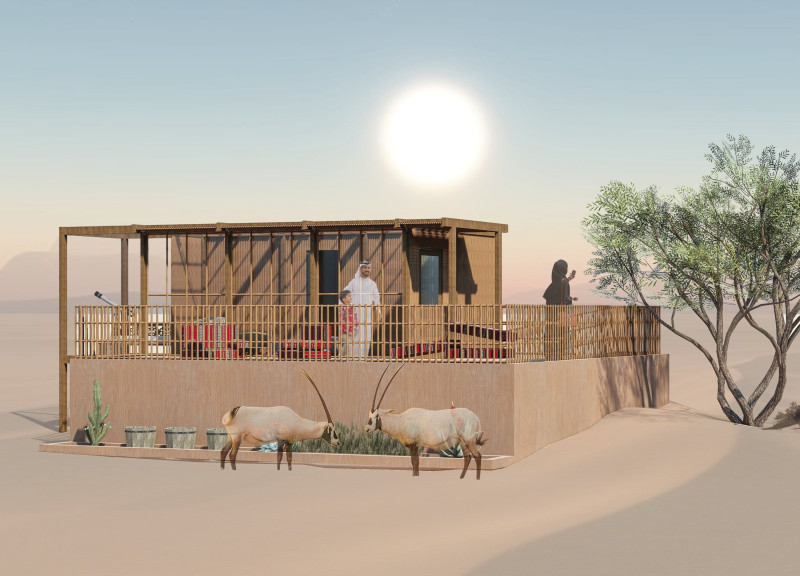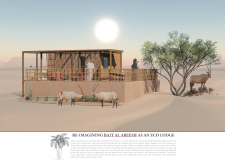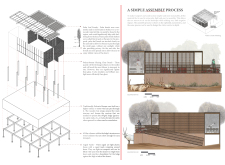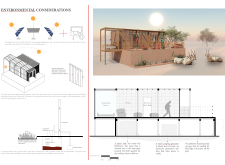5 key facts about this project
Bait Al Areesh Eco Lodge showcases a blend of traditional Emirati architecture and modern sustainable practices. Located in the desert of the United Arab Emirates, it serves to educate visitors about local culture while providing a comfortable experience in a demanding environment. The design draws inspiration from the historical Bait Al Areesh, primarily made from palm fronds. This approach highlights the significance of heritage and the functionality required to thrive in extreme heat.
Traditional Design Elements
The lodge adopts essential aspects of traditional building methods, focusing on natural ventilation and shading to combat high temperatures. The structure is elevated to allow breezes to flow easily underneath, improving thermal comfort without the use of air conditioning. On the east facade, palm fronds are arranged loosely to offer clear views of the surrounding landscape while also providing necessary shade. The west side, in contrast, uses tightly arranged fronds to block direct sunlight.
Materials and Construction Techniques
The choice of materials reflects a commitment to sustainability. Palm fronds serve as the main construction material, echoing the local building traditions of the region. The visitor center is designed with polycarbonate glazing panels, which effectively diffuse sunlight and enhance insulation, both vital for the harsh climate. The lightweight characteristics of these materials make transport and assembly easier, minimizing the environmental impact during construction.
Sustainability Considerations
A range of sustainable practices is integrated into the design. Rotating solar power panels are positioned to maximize energy collection, supported by a backup generator for times when sunlight is limited. Additionally, a compact sewage treatment system directs wastewater towards a herb garden, emphasizing ecological responsibility and functionality.
Design Details
A key feature of the design is the inclusion of small openings in the palm fronds that promote natural airflow. This detail further reduces reliance on mechanical cooling systems. Overall, the design thoughtfully addresses climate considerations while respecting the local environment, forming a connection between the built structure and the surrounding landscape.






















































